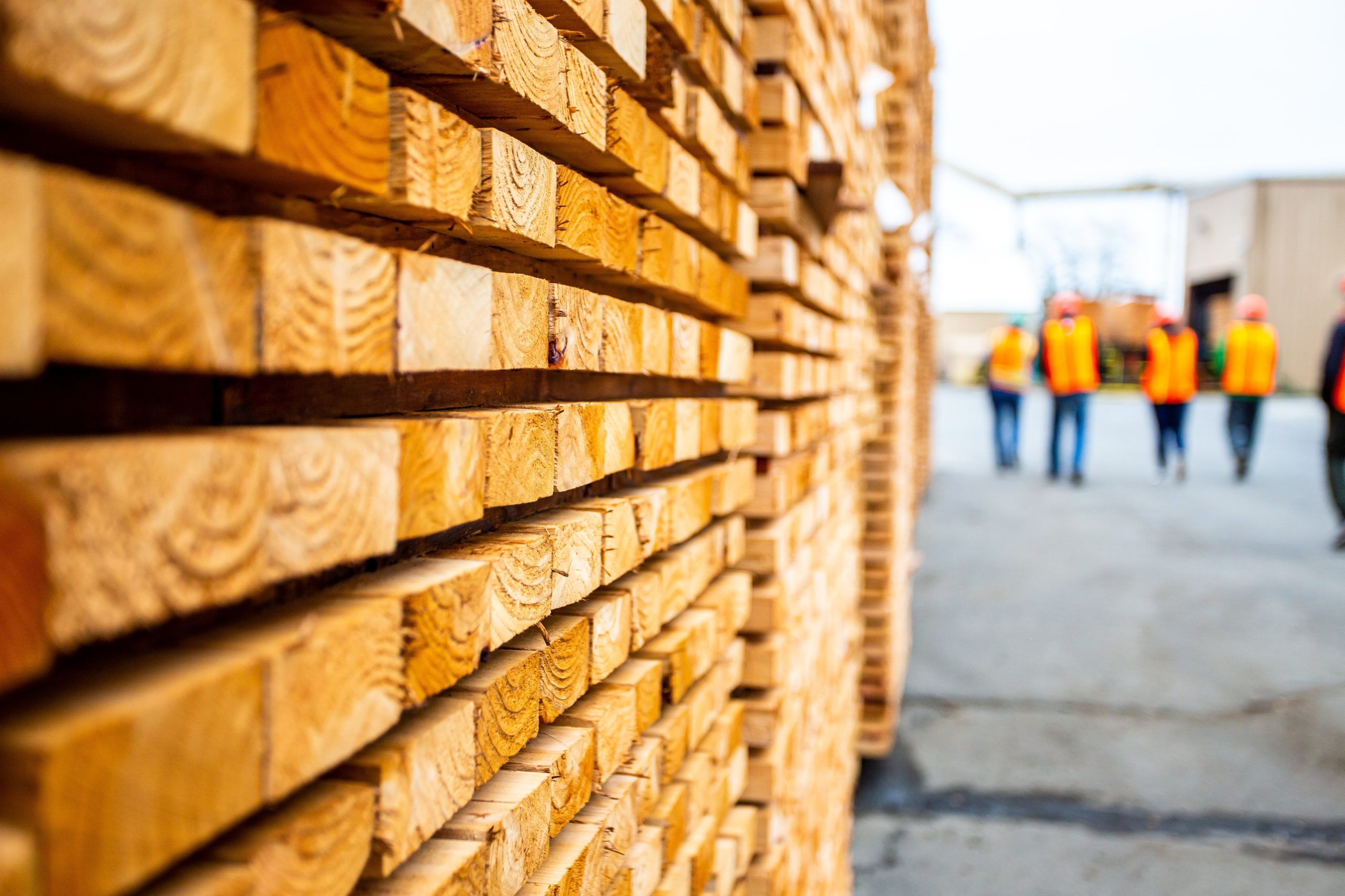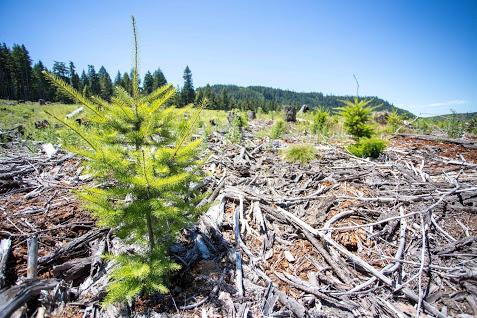
Climate change is real. And forests are part of the solution.
Oregon has 30 million acres of forests. Those forests capture more than half of Oregon’s human-caused emissions and provide unrivaled climate benefits through active forest management, production of carbon-friendly wood products, and avoided use of fossil fuel-intensive alternatives like concrete and steel.
What is Climate Smart Forestry?
Managing forests to increase their ability to adapt to climate change and enhance their ability to capture carbon from the atmosphere and store it in wood fiber, including in products like lumber.
Carbon Policies we support:
Climate smart policies that:
- Are flexible and incentive-based
- Incentivize both carbon capture in forests and carbon storage in wood products
- Reduce fuel for wildfire on public lands
- Bring back or create new forests
- Invest in technologies to make energy from materials not suited for lumber (like tree limbs and tops)
- Enable the use of mass timber in commercial construction
Sustainable forest management policies that:
- Encourage the use of sustainably sourced wood products
- Fund and promote research to increase the lifecycle of wood products
Carbon neutrality policies that:
- Recognize emissions from biomass and the disposal of wood products are carbon neutral
- Account for emissions associated with the manufacturing, transportation, installation, maintenance, and disposal of building materials (embodied carbon)
- Give credit for carbon stored in wood products relative to alternative building products
Forest carbon offsets that:
- Are in non-regulatory carbon markets
- Are in regulatory carbon markets that do not reduce annual harvested wood fiber
- Are real, measurable, additional and avoid or at least recognize the climate impact of offshoring domestic wood demand
- Include credits for using wood in place of a carbon-intensive alternatives in state-based carbon markets
For a more robust document on these policies, click here.
Studies and science to back up these policies:
- iXin, G., Yang, H., Chen, J., Hong, Y., 2017. Review of carbon storage function of harvested wood products and the potential of wood substitution in greenhouse gas mitigation. Forest Policy Econ. 85, 192–200.
- Gonzalez-Benecke, C.A., Martin, T.A., Jokela, E.J., de la Torre, R. 2011. A flexible hybrid model of life cycle carbon balance for loblolly pine (Pinus taeda L.) management systems. Forests 2, 749–776.
- Chen, J., Colombo, S.J., Ter-Mikaelian, M.T., Heath, L.S., 2014. Carbon profile of the managed forest sector in Canada in the 20th century: sink or source? Environ. Sci. Technol fc48:9859-9866.
- Kilpeläinen, A., Alam, A., Torssonen, P., Ruusuvuori, H., Kellomäki, S., Peltola, H., 2016. Effects of intensive management on net climate impact of energy biomass utilization from final felling of Norway spruce. Biomass Bioenergy 87, 1–8.
- Krug,J.,Koehl, M.,Kownatzki, D., 2012.Revaluing unmanaged forests for climate change mitigation. Carbon Balance Manage. 2012 (7).
- Kurz, W.A., Smyth, C., Lemprière, T., 2016. Climate change mitigation through forest sector activities: principles, potential and priorities. Unasylva 246, 61–67.
- Malmsheimer, R.W., Bowyer, J.L., Fried, J.S., Gee, E., Izlar, R.L., Miner, R.A., Munn, I.A., Oneil, E., Stewart, W.C., 2011. Managing forests because carbon matters: integrating energy, products, and land management policy. J. Forest. 109, S7–S50.
- Miner, R.A., Abt, R.C., Bowyer, J.L., Buford, M.A., Malmsheimer, R.W., O’Laughlin, J., Oneil, E.E., Sedjo, R.A., Skog, K.E., 2014. Forest carbon accounting considerations in US bioenergy policy. J. Forest. 112, 591–606.
- Nabuurs, G.J., O. Masera, K. Andrasko, P. Benitez-Ponce, R. Boer, M. Dutschke, E. Elsiddig, J. Ford-Robertson, P. Frumhoff, T. Karjalainen, O. Krankina, W.A. Kurz, M. Matsumoto, W. Oyhantcabal, N.H. Ravindranath, M.J. Sanz Sanchez, X. Zhang, 2007: Forestry. In Climate Change 2007: Mitigation. Contribution of Working Group III to the Fourth Assessment Report of the Intergovernmental Panel on Climate Change [B. Metz, O.R. Davidson, P.R. Bosch, R. Dave, L.A. Meyer (eds)], Cambridge University Press, Cambridge, United Kingdom and New York, NY, USA.
- Peckham, S.D., Gower, S.T., Buongiorno, J., 2012. Estimating the carbon budget and maximizing future carbon uptake for a temperate forest region in the U.S. Carbon Balance Manage. 7, 1–8.
- Perez-Garcia, J., Lippke, B., Comnick, J., Manriquez, C. 2005. An Assessment of Carbon Pools, Storage, and Wood Products Market Substitution Using Life-Cycle Analysis Results. Wood and Fiber Science, 37 Corrim Special Issue, 140-148.
- Pingoud, K., Pohjola, J., Valsta, L., 2010. Assessing the integrated climate impacts of forestry and wood products. Finnish Soc. Forest Sci. 44, 155–175.
- Poudel, B.C., Sathre, R., Gergh, J., Gustavsson, L., Lundström, A., Hyvönen, R., 2012. Potential effects of intensive forestry on biomass production and total carbon balance in north-central Sweden. Environ. Sci. Policy 15, 106–124.
- Taeroe, A., Mustapha, W.F., Stupak, I., Raulund-Rasmussen, K., 2017. Do forests best mitigate CO2 emissions to the atmosphere by setting them aside for maximization of carbon storage or by management for fossil fuel substitution? J. Environ.Manage. 197, 117–129.
- Vance, E.D. 2018. Conclusions and caveats from studies of managed forest carbon Budgets. Forest Ecology and Management 427, 350-354.
Related posts:

In Oregon, homes don’t come from the hardware store
**This opinion originally ran in the Portland Tribune It’s rare to see Democrats and Republicans come together as productively as they recently did with the passage of a $376 million package aimed at addressing Oregon’s chronic undersupply of housing. Despite divisive national rhetoric, Oregon legislators of all stripes are realizing the only reliable way out […]

Oregon Forests Capture Half of Our State’s Human-Caused Carbon Emissions
Imagine you’re a university professor who just finished writing a research paper claiming timber harvest is the leading source of carbon emission in Oregon. You print off your final paper copy, seal up the paper journal submission envelope, and put the envelope in the mail so it can make its way to the publisher in […]
